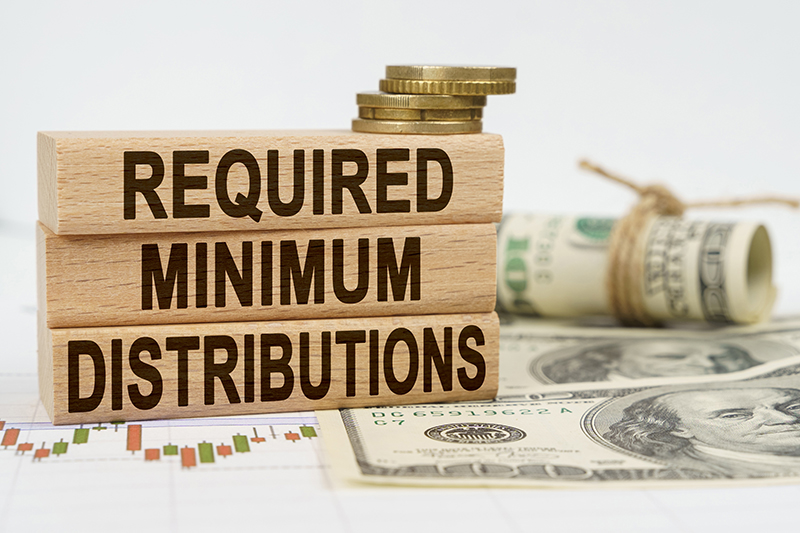Required Minimum Distributions Waived for 2020
February, 08 2021 by Carolyn Richardson, EA, MBA
Retirees should be aware that, for calendar year 2020, the required minimum distribution (RMD) requirements have been temporarily suspended. The suspension applies to defined contribution plans (but not defined benefit plans) and individual retirement accounts (IRAs). The required minimum distribution is a withdrawal from your retirement accounts and is included in taxable income - except for any part that was contributed “after tax,” such as with Roth IRAs. The RMD is the least amount you may withdraw, calculated based on the account balances, your age, and your life expectancy. You can withdraw more if you desire.
Normal Required Minimum Distribution Rules
Normally, a taxpayer who reaches a certain age in a calendar year must start taking RMD's from their retirement accounts. For many years, this age was the year you reached 70½. Once you reached this age, you had to start withdrawing money from your retirement accounts, even if you were still working. Under the SECURE Act, this age was increased to 72 years of age if you reached 72 in 2020 or later years. RMD's for the first year must normally be taken by April 1st of the calendar year following the year in which you reach either 70½ or 72 years of age. After that, they must be withdrawn annually by December 31.
For example, prior to 2020, if you reached 70½ in 2019, you had until April 1, 2020 to take your RMD. Under the SECURE Act, if you reached 70½ in 2020, you are not required to take your RMD until you reach 72 in 2022. If you reach 72 in 2022, you must take your first RMD by April 1, 2023, and that would be to satisfy your RMD requirement for 2022. You would then need to take another RMD by December 31, 2023 to satisfy your 2023 RMD requirement. Failure to take an RMD can result in stiff penalties.
Who Can Waive the Required Minimum Distribution Requirement for 2020?
The option to waive 2020 retirement required minimum distributions applies to both taxpayers who are already taking RMDs because they turned 70½ in earlier years as well as to taxpayers who turned 70½ in 2019 but desired to wait until April 1, 2020 to take their first RMD. If the taxpayer turns 72 in 2020, they may delay their first RMD until April 1, 2021. These withdrawal rules apply to IRAs, including inherited IRAs, SEP and SIMPLE IRAs, and defined contribution plans like those under 401(k), 403(b), and 457(b) plans. RMDs are not required for Roth IRAs. For a participant in a qualified pension plan, they must start taking RMDs following the later of the year in which they reach 72. If the taxpayer continues to work past age 72, then they may not be required to begin pension plan distributions until they retire, but it will depend on the pension plan rules the employer enacted. Employer plans may have additional rules for distributions as well.
What if the Account Owner has Passed Away?
If the account owner dies before minimum distributions have begun, the entire remaining interest in the plan must be distributed within five years of the participant’s death, unless the sole beneficiary of the account is the taxpayer's spouse. However, 2020 will be excluded from the five-year rule. Non-spouse beneficiaries who inherited a retirement account from a person who died on or before December 31, 2019, must choose by December 31 of the following year whether to take an entire distribution of the account now or spread the distributions over five years. The distributions can be taken in any amount and at any time, as long as all the money in the account is distributed by December 31st of the fifth year following the death of the original account holder. Under the CARES Act of 2020, retirement beneficiaries have until December 31, 2021, to make a distribution election on retirement accounts they inherited in 2019.
What if You Already Took Your 2020 Required Minimum Distribution?
If you already took your 2020 RMD between January 1, 2020, and April 1, 2020, you may avoid paying tax on the distribution if you redeposit the RMD amount into a qualified retirement plan on or before August 31, 2020. This will be treated as a qualified indirect rollover. In this situation, you can redeposit the RMD into the same account it was withdrawn from or into another qualified plan. The redepositing of the 2020 withdrawal is not subject to the “one indirect IRA rollover per year” rule.
One other bright side of the SECURE Act is that you are no longer prohibited from making contributions to your IRA once you reach age 70½ if you have earned income and otherwise qualify. There is no longer an age limitation on IRA contributions.





